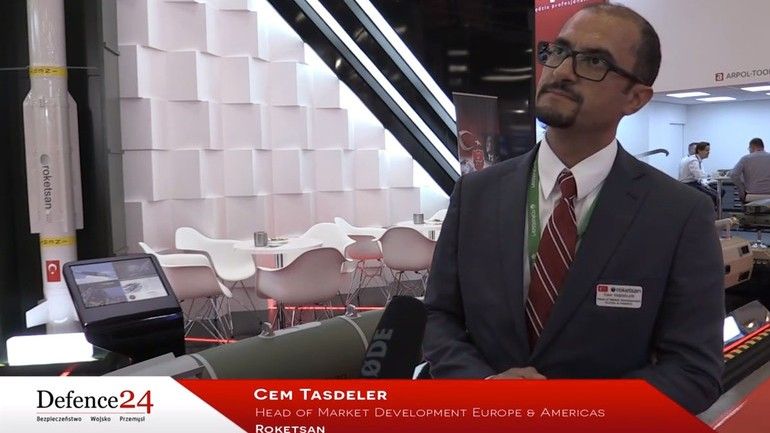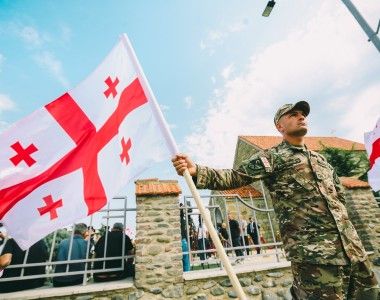
Roketsan Offer of Missile Systems for Poland [Defence24.pl TV]
Turkish Roketsan company offers missile systems for Poland, which could be utilized within the framework of the Kruk and Narew programmes, and also within the process of modernizing the existing inventory used by the Polish Army. As Roketsan we do not promote our products for just this, we intend to build cooperation, industrial cooperation, where there is infrastructure and capability in the homelands.– as we were told by Roketsan’s Cem Tasdeler, Head of Market Development Europe & Americas, during the MSPO defence exhibition which was just recently held in Kielce.
Turkish Roketsan company, during the Kielce MSPO exhibition, assured that it is willing to establish and maintain collaboration with the Polish Defence Industry, including the Polska Grupa Zbrojeniowa. In order to do that, the Turkish entity is planning to promote any capabilities or technology that the Polish industry may make useful. As Roketsan we do not promote our products for just this, we intend to build cooperation , industrial cooperation, where there is infrastructure and capability in the homelands.For this reason, we have been working with the Polish industry, companies from PGZ, on where we can promote this capability to be inherited by the Polish industry. - as we were told by Cem Tasdeler, Roketsan’s Head of Market Development Europe & Americas.
Kruk attack helicopter procurement programme is one of the Polish modernization initiatives which turned out to be quite interesting for the Roketsan company. Roketsan is proposing that the prospective Polish attack helicopters are fitted with weapons systems manufactured for the T129 platform, utilized by the Turkish Armed Forces. These include, inter alia, heavy UMTAS missiles and CIRIT rockets.
During this time we have found out that Kruk programme is one of the main programmes [in which] we would like to share our technologies and make useful for the NATO countries as Poland, to use technologies on their new generation helicopters.
Light, multi-platform CIRIT rockets have been designed on the basis of the 70 mm unguided rocket, quite popular among the NATO member states. Cem Tasdeler notes that not only may these rockets be used in case of the aircraft, but they may also be successfully utilized on vehicular platforms, or naval vessels. Once the system is additionally fitted with a passive laser guidance system and control system (movable ailerons in the front section of the rocket), a precision guided weapon is obtained.
And CRIT is one of our highlights in Poland, that we can integrate on any platform such as helicopters, such as naval vessels, and also land platforms, where there is a wide range of land platforms used by the Polish Armed Forces.
It is also worth to mention the fact that Turkey is planning to form new capabilities within the scope of the missile defence systems. In order to do that, Roketsan has been tasked with challenge, to create the new missile defence system, known under the name of HISAR. The representative of the Turkish company notes that this system is also offered to the Polish Army, within the framework of the Narew programme. Tasdeler emphasizes the fact that proposal also includes the industrial cooperation.
We propose HISAR missiles, low and medium range, under the Narew programme. And again, as I mentioned, because this programme also consists of indigenous development, we are able to propose industrialization in Poland for the missile as well.
Roketsan is responsible for creating the ‘future-extended’ missiles, as defined by Tasdeler. HISAR is a modular anti-aircraft system based on container-based vertical launch system, for rockets which are guided with the use of an IR-guidance suite complemented by a data-link, allowing the user to update the target data during the missile’s flight. The missiles in question are to be used to act against aircraft, helicopters, UAVs, cruise missiles or air to ground missiles.



